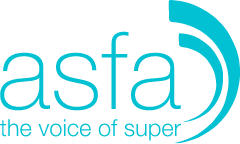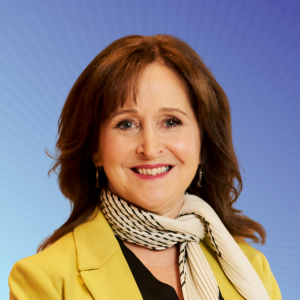9 May 2013
Health costs up, leisure costs down: new ASFA Retirement Standard figures
There has been a small drop in the expenditure required for a comfortable retirement, according to new figures released today for the ASFA Retirement Standard. A couple looking to achieve a ‘comfortable’ retirement will need to spend $56,317 a year, a decrease of about a dollar a week when compared to the December 2012 quarter.
In percentage terms, the aggregate costs for a couple living comfortably in retirement were down by less than 0.1 per cent in the March quarter 2013 from the December quarter 2012 (See Table 1 for budget breakdown).
While the costs in a number of areas rose, including the costs of energy and health services, there was a small fall in the price of food and a larger fall in the price of leisure goods and services. The strong exchange rate has led to the cost of overseas holidays and items such as televisions and computers falling.
The new figures indicate that couples seeking a ‘modest’ retirement lifestyle need to spend $32,603 a year, up slightly from the last quarter. For a single female living at the modest level costs were up by 0.2 per cent compared to the previous quarter. As noted above, a significant fall in the prices of goods and services in the leisure category was largely responsible for the small fall in the comfortable budget. Given that these expenses are a smaller part of the modest lifestyle budget, the price fall in this category was not sufficient to prevent a rise in the overall modest budget.
The movement in costs over the quarter for retirees was less than the 0.4 per cent increase recorded in the All Groups Consumer Price Index (CPI). This is because the 5.7 per cent increase in education prices in the quarter, which made a substantial contribution to the All Groups CPI, was not relevant to the budgets for retirees as per the Standard.
It is not unusual for there to be differences in specific quarters, as retiree households on average have somewhat different spending patterns to the rest of the population. Over the longer term these differences tend to average out.
Along with spending little on education services, retirees generally own their own home outright (so cost increases for housing are less important). In contrast, food, health, transportation, recreation and energy spending form a large part of retiree budgets.
Table 1: Budgets for various households and living standards (March quarter 2013, national)
| Modest lifestyle – single |
Modest lifestyle – couple |
Comfortable lifestyle – single |
Comfortable lifestyle – couple |
|
|---|---|---|---|---|
| Housing – ongoing only | $61.53 | $59.06 | $71.31 | $82.67 |
| Energy | $41.42 | $55.01 | $42.03 | $57.01 |
| Food | $74.23 | $153.76 | $106.04 | $190.88 |
| Clothing | $17.49 | $28.39 | $37.86 | $59.06 |
| Household goods and services | $25.95 | $35.18 | $72.99 | $85.51 |
| Health | $38.06 | $73.45 | $73.34 | $133.27 |
| Transport | $94.48 | $97.15 | $140.79 | $143.47 |
| Leisure | $71.61 | $106.69 | $217.02 | $297.40 |
| Communications | $9.45 | $16.54 | $25.97 | $33.06 |
| Total per week | $434.22 | $625.26 | $789.53 | $1,080.04 |
| Total per year | $22,641 | $32,603 | $41,169 | $56,317 |
The figures in each case assume that the retiree(s) own their own home and relate to expenditure by the household. This can be greater than household income after income tax where there is a drawdown on capital over the period of retirement. Single calculations are based on female figures. All calculations are weekly unless otherwise stated.
Between the December quarter 2012 and the March quarter 2013, retirees had a 0.8 per cent decrease in the cost of food and over the year to the March quarter, there was an increase of 1.6 per cent. A fall in the price of fruit and vegetables in the March quarter was largely responsible.
Electricity costs rose on average by 2.4 per cent, reflecting substantial price increases in a few states. Typically electricity prices in each state are relatively constant for a few quarters and then there is a large increase. The price increase over the year was a substantial 14.4 per cent.
Transport costs increased 0.5 per cent with a 1.2 percent increase in the cost of automotive fuel. This was partially offset by a decrease in the cost of motor vehicles.
The prices of leisure goods and services fell by 0.8 per cent between the quarters, with the cost of overseas holidays falling by 5.2 per cent and audio, visual and computing equipment by 4.7 per cent. This had particular implications for the comfortable budgets.
Communications costs were unchanged in the quarter. The increase in costs over the year was also a relatively modest 1.5 per cent.
The 3.0 per cent increase in the price of health services reflected a 7.6 per cent increase in pharmaceutical prices due to fewer individuals benefiting from the Pharmaceutical Benefits Scheme safety net. Over the year there was a 6.1 per cent increase in the costs of health services. Over the longer term health services tend to experience higher increases in prices than other categories of consumer goods and services.
More information
Costs and summary figures can be accessed via the ASFA website.
About the ASFA Retirement Standard
The ASFA Retirement Standard is an initiative of the Association of Superannuation Funds of Australia (ASFA) benchmarking the annual budget needed by Australians to fund either a comfortable or modest standard of living in the post-work years.
It is updated quarterly to reflect inflation and provides detailed budgets of what singles and couples would need to spend to support their chosen lifestyle.
Modest lifestyle in retirement
Better than the Age Pension, but still only able to afford fairly basic activities.
Comfortable retirement lifestyle
Enabling an older, healthy retiree to be involved in a broad range of leisure and recreational activities and to have a good standard of living through the purchase of such things as: household goods; private health insurance; a reasonable car; good clothes; a range of electronic equipment; and domestic, and occasionally international, holiday travel.
For media enquiries, please contact:
Katrina Horrobin, General Manager – Member Strategy, Communications & Brand, (02) 8079 0825
About ASFA
ASFA is the peak policy, research and advocacy body for Australia’s superannuation industry. It is a not-for-profit, sector-neutral, and non-party political national organisation whose aim is to advance effective retirement outcomes for members of funds through research, advocacy and the development of policy and industry best practice.
































